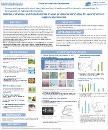Isolation, cultivation, and characterization of novel local marine micro-algae for aquaculture feed supplement production
| Author | Dalgamouni, Tasneem atef |
| Author | Kanji, Shatha |
| Author | Cherif, Maroua |
| Author | Rasheed, Rihab |
| Author | Bounnit, Touria |
| Author | Aljabri, Dr. Hareb |
| Author | Saadaoui, Dr. Imen |
| Author | Hamadou, Dr. Radhouane Ben |
| Available date | 2020-10-22T06:59:11Z |
| Publication Date | 2020 |
| Publication Name | Qatar University Annual Research Forum & Exhibition 2020 |
| Citation | Dalgamouni T.A., Kanji S., Cherif M., Rasheed R., Bounnit T., Aljabri H., Saadaoui I., Hamadou R.B., "Isolation, cultivation, and cultivation, and characterization of novel local marine micro-algae for aquaculture feed supplement production", Qatar University Annual Research Forum and Exhibition (QUARFE 2020), Doha, 2020, https://doi.org/10.29117/quarfe.2020.0037 |
| Abstract | Aquaculture is considered as a promising alternative to support the food demands of the ever-increasing population. Currently, this sector faces several challenges such as using fishmeal, which is unsustainable and expensive. Therefore, it is necessary to identify an alternative feed component that is sustainable, cost-effective and can provide the essential nutrients required by the fish. In this context, microalgae are considered as a viable source of proteins, lipids, polysaccharides and high-value products (HVPs) such as essential fatty acids, amino acids and vitamins. They play a vital role in the marine food chain and hence can be easily assimilated by the fish. The current research targeted the isolation, identification and characterization of novel marine microalgae from Qatar coastline to produce aquaculture feed supplement. As the climate poses a number of stress factors, such as high light intensities, temperatures and varying salinities, it is expected that novel microalgae with interesting metabolite profiles can be isolated from the environment for developing aquaculture sector in Qatar. Standard plating methods were used to isolate halophilic strains from field waters. PCR-sequencing was used to identify the novel microalgae, cyanobacteria and Diatom isolates. Then a comparative analysis of the growth performance and metabolite content was performed to characterize these strains. Results evidenced that the cyanobacteria strain exhibited the highest biomass productivity of 51.4 mg L-1day-1 whereas the highest lipid content was observed in the novel diatom isolate ranging up to 28.62% and the highest amount of carotenoids was detected in the case of the microalgae. As in conclusion, a rich feed supplement blending the three isolates can be considered as an alternative to fishmeal. As a continuation of this research, the potential strains will be cultivated under various stress to increase their nutritional value. |
| Language | en |
| Publisher | Qatar University Press |
| Subject | Aquaculture Sood security Sustainable Microalgae. |
| Type | Poster |
Files in this item
This item appears in the following Collection(s)
-
Theme 1: Energy, Environment & Resource Sustainability [108 items ]


